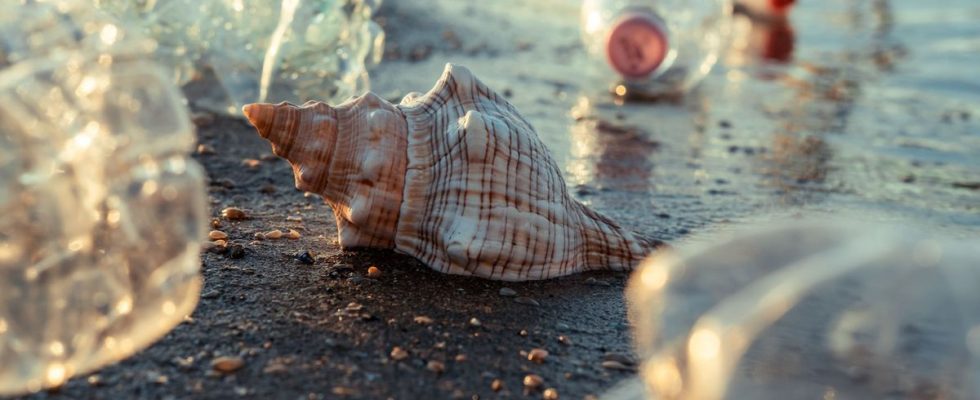Published on
Updated
Reading 3 min.
Invented less than a century ago, PFAS, these molecules nicknamed “eternal pollutants” are now detected all over the planet, from the snow of Antarctica to the livers of polar bears or our groundwater. And only the “tip of the iceberg” is known.
“No ecosystem escapes contamination“per- and polyfluoroalkyl substances, designated by the acronym PFAS, summarizes for AFP Yann Aminot, researcher at the French Research Institute for the Exploitation of the Sea (Ifremer).
For six years, this specialist in environmental contamination has examined sediments from the Indian and Pacific Oceans, dolphin livers from the Bay of Biscay and samples from French oyster farms. “I don’t think I’ve ever seen a single sample free of perfluorinated contaminants“, he says.
These synthetic molecules, the best known of which gave birth to Teflon for stoves, were developed after the war to give packaging, paints and coatings exceptional resistance to water or heat.
A quality that has become a threat: “As these are persistent compounds, which do not degrade, and which are mobile, they will end up in the marine environment, which is always the ultimate receptacle for contamination.“, explains the French researcher.
Awareness of this spread dates back to 2001, when an American study summarized research carried out around the Great Lakes of North America, in the Baltic Sea and in the Mediterranean Sea: the bald eagle, the polar bear, albatross and various species of seals, all were contaminated with PFOS – a family of PFAS used in detergents, firefighting foams, waxes, now banned, but still present in the environment.
Since then, multiple studies have established their massive diffusion, via the transport of molecules in the air, water and through the food chain, even if the effects remain difficult to measure.
In the Seine estuary, recently examined by Ifremer, everything is contaminated: from the zooplankton assimilated by shellfish, themselves consumed by small fish, to the soles and sea bass, predators at the end of the food chain.
Once in the body, PFAS seem to be able to reach the brain of vertebrates and affect the nervous system, noted in 2021 two ecotoxicologists from Pittsburgh, in the United States. While an Australian study detected their presence in turtle eggs in 2022, establishing transmission from female to offspring.
“Unfortunate substitutions”
Between Norway and Greenland, more than 100 tonnes of PFAS pass annually between the North Atlantic Ocean and the Arctic, through the Farm Strait, estimates a study published in January by the NGO American Chemical Society (ACS), with traces detected at 3,000 feet depth.
If the PFAS family contains more than 4,000 molecules, global contamination is “best documented for around twenty of them, the most stable”, “but this is only the tip of the iceberg”, summarizes Yann Aminot.
The most detected are those of the PFOS and PFOA subfamily (used in particular to make plastics impermeable to water or oil), banned since 2009 for the former and strongly restricted since 2019 for the latter, by the Stockholm Convention.
But “the molecules introduced as replacements are not less harmful, nor less toxic and not necessarily less persistent“, explains Mr. Aminot.
These alternatives, described as “unfortunate substitutions” by environmental chemists, are sometimes degradable, but will bind in nature to more robust PFAS and become “indirectly persistent”, describes Pierre Labadie, researcher at CNRS.
“Behind the historic family, it is a real jungle, it is difficult to estimate the volume of the submerged part“, he adds.
For lack of having a list available, “we make circuitous approaches, almost like judicial police“, says Yann Aminot, obliged to “blindly searching for molecules” which the industry keeps secret.
But are PFAS harmful at low doses? If data is still lacking, Yann Aminot draws a parallel with endocrine disruptors, which do not follow the principle “the dose makes the poison” and are toxic at very low concentrations.
“A wild organism is never exposed to a single PFAS, but to a cocktail of PFAS and also micropollutants“, adds Pierre Labadie. Nobody yet knows how to evaluate these cumulative effects, “a real challenge” for science, which invites us to take all precautions without delay, he justifies.
